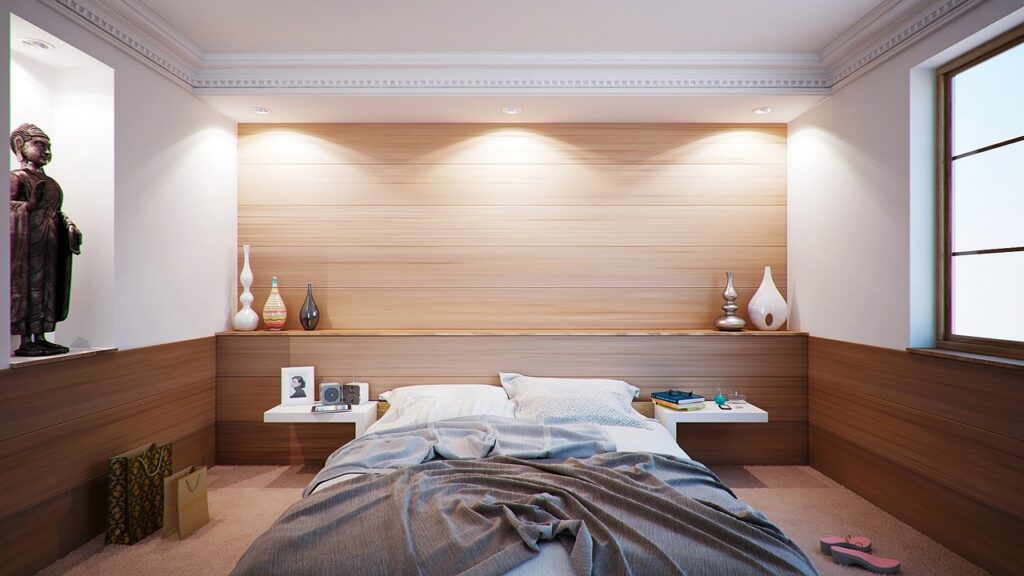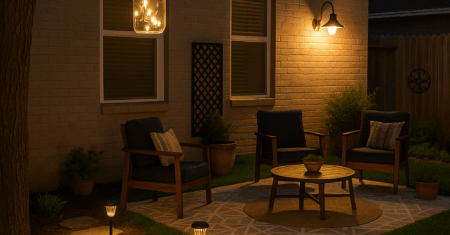How Your Home Design Affects Your Physical and Mental Health

Have you ever walked into a room and instantly felt your mood shift? Perhaps a cluttered space made you feel anxious, or a sun-filled living room immediately lifted your spirits. This is no coincidence—your home design profoundly impacts both your physical and mental health, often in ways you might not even realize. The spaces we inhabit shape our daily experiences, influence our behaviors, and can either support or undermine our well-being.
As we spend roughly 90% of our lives indoors—with much of that time in our homes—the significance of thoughtful home design cannot be overstated. From the quality of your sleep to your stress levels, from your productivity to your social connections, your living environment silently but powerfully affects nearly every aspect of your health.
The relationship between our homes and our health has become even more pronounced in recent years, as remote work has blurred the boundaries between our personal and professional lives. Many of us are now navigating the challenges of creating spaces that serve multiple purposes—supporting our work, our relaxation, and our relationships—all under one roof. In this comprehensive guide, we’ll explore the fascinating science behind how your home design influences your well-being and provide practical strategies to create spaces that nurture both your body and mind.
What You’ll Learn in This Article
🏡 Understanding the Home-Health Connection
- The science behind how physical spaces affect our bodies and minds
- Key environmental factors that impact health
- Recent research findings from environmental psychology
🛋️ Key Design Elements That Impact Your Wellbeing
- Light exposure and its effects on mood and sleep
- Color psychology and emotional responses
- Spatial organization and mental clarity
🌿 Creating Health-Promoting Spaces
- Natural elements for reduced stress
- Air quality improvements
- Ergonomic considerations for physical health
💤 Designing for Better Sleep
- Bedroom layouts for optimal rest
- Materials and textures that support relaxation
- Managing light and sound for sleep quality
💆♀️ Stress-Reducing Design Strategies
- Mindful decluttering approaches
- Creating restorative spaces
- Balance between stimulation and calm
🧠 Supporting Mental Health Through Design
- Spaces that foster connection
- Design for mindfulness and presence
- Adapting your home for emotional wellbeing
🏡 Understanding the Home-Health Connection
Research shows that our physical environments directly affect our cortisol levels, cognitive function, and overall wellbeing.
The connection between our living spaces and our health is backed by extensive scientific research. Environmental psychologists have been studying this relationship for decades, revealing how our surroundings influence everything from our hormone levels to our cognitive abilities.
According to Dr. Sally Augustin, environmental psychologist and founder of Design With Science, “The places where we spend time influence who we are and how we feel—sometimes in very powerful ways. Our mental and physical health are intricately tied to our environments, particularly our homes.”
Research from the Journal of Environmental Psychology shows that people who feel satisfied with their home environments report 15% higher overall wellbeing scores than those who don’t. This correlation becomes even stronger when examining specific health metrics:
- Exposure to natural light in homes correlates with a 40% reduction in seasonal affective disorder symptoms
- Well-ventilated spaces can improve cognitive performance by up to 61%, according to Harvard research
- Homes with access to green spaces or natural elements are associated with a 16% decrease in reported stress levels
The mechanism behind these effects involves multiple bodily systems. Your autonomic nervous system—which controls unconscious processes like heart rate and respiration—responds directly to environmental cues. Chaotic, cluttered spaces can trigger your sympathetic nervous system (the “fight or flight” response), increasing stress hormones like cortisol. Conversely, organized, harmonious environments activate your parasympathetic nervous system (the “rest and digest” response), promoting relaxation and recovery.
Your home’s design also impacts your behaviors, often without conscious awareness. Spaces that make healthy habits convenient and enjoyable—like a well-organized kitchen that makes cooking easier or an inviting area for physical activity—subtly encourage health-promoting choices throughout your day.
🛋️ Key Design Elements That Impact Your Wellbeing
Natural light, thoughtful color choices, and proper spatial organization form the foundation of a health-promoting home.
When considering how your home affects your health, certain design elements emerge as particularly influential. Understanding these key factors can help you make informed decisions about your living environment.
🌿Natural Light: The Most Powerful Health Element

Perhaps no single design factor impacts health as profoundly as natural light. Exposure to natural light regulates your circadian rhythm, the internal clock that governs sleep-wake cycles, hormone production, and countless other bodily functions.
“Natural light is the most important element in home design from a health perspective,” explains Dr. Michael Roizen, Chief Wellness Officer at Cleveland Clinic. “It synchronizes our biological clocks, affects our mood, and influences vitamin D production, which impacts everything from bone health to immune function.”
Research findings on natural light in homes:
- Morning light exposure can increase alertness and reduce depression symptoms by up to 25%
- Homes with optimal daylight exposure show residents with 76% less fatigue
- Workspaces with natural light report 40% higher productivity and 15% greater creativity
Pro Tip: Position your desk or breakfast table near windows to maximize morning light exposure, which helps regulate melatonin production and improves sleep quality at night.
Color Psychology: How Your Walls Affect Your Mind

The colors surrounding you influence your psychological state in subtle but significant ways. Different colors trigger different neurological responses and emotional reactions:
| Color | Psychological Effect | Best For |
|---|---|---|
| Blue | Calming, reduces blood pressure | Bedrooms, bathrooms |
| Green | Stress-reducing, promotes balance | Living rooms, home offices |
| Yellow | Energizing, stimulates conversation | Kitchens, dining areas |
| Red | Stimulating, increases heart rate | Accent walls, social spaces |
| White | Creates sense of spaciousness | Small spaces, minimalist designs |
“Color is not just decorative—it’s a functional element that affects your physical and emotional responses,” says Maria Killam, color expert and design consultant. “The right colors can reduce stress, improve sleep quality, and even make spaces feel physically larger or more intimate.”
Spatial Organization and Flow
How your home is arranged—its spatial organization and flow—directly affects your cognitive load and stress levels. A UCLA study found that women who described their homes as “cluttered” or “disorganized” showed higher levels of cortisol throughout the day compared to women who described their homes as “restful” or “restorative.”
Effective spatial organization includes:
- Clear pathways for movement through your home (at least 30-36 inches for main passageways)
- Defined zones for different activities (working, relaxing, sleeping)
- Appropriate proportions between furniture and room size (maintaining 30-40% open floor space)
- Strategic furniture placement that follows natural movement patterns
Creating Health-Promoting Spaces

Incorporating natural elements, improving air quality, and considering ergonomics can transform your home into a health sanctuary.
Now that we understand the foundation of home-health connections, let’s explore how to intentionally design spaces that actively promote wellbeing.
Biophilic Design: Bringing Nature Inside
Biophilic design—incorporating natural elements into your home—satisfies our innate need to connect with nature. This approach has shown remarkable health benefits:
- Exposure to indoor plants can reduce stress levels by up to 38%
- Views of natural elements can lower heart rate by 5-7 beats per minute
- Natural materials like wood have been shown to reduce blood pressure and improve emotional states
Practical ways to incorporate biophilic design:
- Add 1-2 plants to each main living area (snake plants and pothos are low-maintenance options)
- Use natural materials like wood, stone, and cotton
- Maximize views to outdoor greenery
- Consider a small indoor fountain for the soothing sound of water
- Use nature-inspired patterns in textiles and décor
A study from the Journal of Physiological Anthropology found that interacting with indoor plants can reduce both psychological and physiological stress by suppressing sympathetic nervous system activity. Even small additions of natural elements can have measurable effects on your physical health.
Indoor Air Quality: The Invisible Health Factor
The air you breathe at home directly affects your respiratory health, sleep quality, cognitive performance, and immune function. According to the EPA, indoor air is typically 2-5 times more polluted than outdoor air, making air quality a critical health consideration.
Improve your home’s air quality with these strategies:
- Ventilation: Open windows daily when weather permits; use exhaust fans in kitchens and bathrooms
- Filtration: Use high-quality HVAC filters (MERV 11+) and change them every 60-90 days
- Purification: Consider air purifiers with HEPA filters for bedrooms and main living areas
- Reduce toxins: Choose low-VOC paints and natural cleaning products
- Humidity control: Maintain 40-60% humidity for optimal respiratory health
Important: Indoor plants like peace lilies, spider plants, and rubber plants not only add visual appeal but also help filter common indoor air pollutants. NASA research shows that having 1-2 plants per 100 square feet can significantly improve air quality.
Ergonomic Considerations for Physical Health
The physical design of your home—particularly spaces where you sit, sleep, and work—has direct effects on your musculoskeletal health. Proper ergonomics can prevent chronic pain, improve posture, and enhance energy levels.
Key ergonomic considerations:
- Work spaces: Desk height at 28-30 inches; computer screen at eye level; chair supporting natural spine curvature
- Kitchen design: Counter heights appropriate for your height (typically 36 inches); frequently used items stored between waist and shoulder height
- Furniture selection: Seating that supports proper posture; mattresses aligned to sleep position and body type
- Lighting position: Task lighting directed to prevent eye strain and awkward postures
According to the American Physical Therapy Association, home environments that support proper body alignment can reduce the risk of repetitive stress injuries by up to 60%. Simple adjustments to your most-used spaces can have significant long-term health benefits.
Designing for Better Sleep

A well-designed bedroom can dramatically improve your sleep quality, which affects every aspect of physical and mental health.
Perhaps no single health factor is as important as quality sleep, and your bedroom design plays a crucial role in how well you rest. With Americans reporting increasingly poor sleep quality—about 70% of adults reporting insufficient sleep at least once a month—bedroom design deserves special attention.
Bedroom Layout Principles for Restorative Sleep
The spatial arrangement of your bedroom significantly impacts sleep quality. Research from sleep medicine specialists suggests these key principles:
- Bed positioning: Place your bed against a solid wall (not a window), ideally with the headboard on the wall farthest from the door for psychological security
- Circulation space: Maintain at least 24 inches of clearance around three sides of the bed for proper air circulation
- Electronic zoning: Create distance between sleep areas and electronic devices (minimum 6 feet from bed to TV/computer)
- Visual calm: Minimize visual stimulation by securing cables, reducing clutter, and using storage solutions that keep items out of sight
Dr. Rebecca Robbins, sleep researcher at Harvard Medical School, explains: “Your bedroom should evoke a sense of calm immediately upon entering. This triggers the psychological preparation for sleep, which begins before you even lie down.”
Materials and Sensory Elements for Sleep
The tactile and sensory elements of your bedroom directly affect your nervous system’s ability to downshift into sleep mode:
| Element | Recommendation | Sleep Benefit |
|---|---|---|
| Mattress | Medium-firm, supportive for your sleep position | Reduces pressure points, prevents pain-related waking |
| Bedding | Natural fibers like cotton, linen, bamboo | Better temperature regulation, reduced night sweats |
| Colors | Cool tones (blues, greens, lavenders) | Lower heart rate, reduced arousal response |
| Textures | Soft, non-stimulating surfaces | Triggers relaxation response through tactile comfort |
| Scents | Lavender, chamomile, cedarwood | Research shows 20% improvement in sleep quality |
Pro Tip: Consider layering your bedroom lighting with at least three sources: ambient ceiling light, medium-brightness lamps, and dim reading lights. This allows you to gradually reduce light exposure as bedtime approaches, supporting your body’s natural melatonin production.
Light and Sound Management
Environmental factors like light and sound can make or break your sleep quality:
- Light control: Use blackout curtains or blinds to eliminate external light; remove or cover LED indicators from electronics
- Strategic lighting: Install dimmer switches or smart bulbs that can shift to warmer tones in the evening
- Sound management: Address noise issues with weatherstripping, door sweeps, or white noise machines
- Acoustic improvements: Add soft surfaces (rugs, upholstered headboards, heavy curtains) to absorb sound and create a quieter sleep environment
A study in the Journal of Sleep Research found that even small amounts of ambient light during sleep can decrease melatonin production by up to 50%, highlighting the importance of creating a truly dark sleeping environment.
💆♀️Stress-Reducing Design Strategies

Thoughtful home design can significantly reduce daily stress by creating spaces that support mental clarity and emotional balance.
Chronic stress contributes to numerous health problems, from cardiovascular disease to immune suppression. Your home environment can either amplify or buffer daily stressors, making stress-conscious design a health essential.
The Science of Clutter and Mental Load
Research from Princeton University’s Neuroscience Institute demonstrates that visual clutter competes for your attention, reducing your brain’s ability to focus and process information. This “visual noise” increases cognitive load, leaving you mentally exhausted.
The science is clear: physical clutter creates measurable mental effects:
- Participants in cluttered environments showed 23% higher cortisol levels than those in organized spaces
- Working memory performance decreased by up to 30% in visually busy environments
- Decision fatigue increased significantly in spaces with visual disorder
Implementing mindful decluttering isn’t about achieving perfect minimalism, but rather creating visual breathing room:
- Apply the “one in, one out” rule to maintain equilibrium in your possessions
- Create designated “homes” for frequently used items to reduce daily decision-making
- Establish clutter-free zones, particularly in areas for relaxation or focused work
- Use the 80/20 rule: keep surfaces 80% clear, with only 20% occupied by necessary or meaningful items
“Clutter is not just a physical issue—it’s a stress multiplier,” explains Dr. Joseph Ferrari, professor of psychology at DePaul University. “My research shows that people who live with significant clutter have poorer life satisfaction and lower productivity, regardless of personality type or income level.”
Creating Restorative Retreat Spaces
Even in modest homes, designating at least one area specifically for restoration can significantly reduce stress levels. These intentional “retreat spaces” serve as environmental triggers for your parasympathetic nervous system.
Elements of effective retreat spaces:
- Sensory control: Manageable sound levels, adjustable lighting, comfortable temperature
- Connection to nature: Views of outdoors, natural materials, plants, or nature-inspired art
- Comfort elements: Supportive seating, soft textures, appropriate scale for human body
- Meaningful objects: Personal items that evoke positive memories or emotions
A personal retreat space needn’t be large—even a comfortable chair in a bedroom corner with good light for reading can serve this function. The key is consistency and intention; regularly using this space specifically for relaxation creates a powerful conditioned response.
Balance Between Stimulation and Calm
Different activities require different levels of environmental stimulation. A well-designed home provides varied sensory experiences appropriate to different needs and activities:
| Activity | Optimal Stimulation Level | Design Considerations |
|---|---|---|
| Deep work/focus | Low stimulation | Neutral colors, sound control, minimal visual distraction |
| Creative thinking | Moderate stimulation | Interesting views, varied textures, moderate color |
| Social connection | Higher stimulation | Conversation-promoting layouts, engaging elements |
| Rest/recovery | Minimal stimulation | Soft textures, quiet spaces, low light options |
“Creating microclimates within your home that support different brain states is one of the most powerful ways to use design for wellbeing,” says design psychologist Toby Israel, Ph.D. “Your environment should flex to support you through different activities and emotional needs.”
Supporting Mental Health Through Design

Thoughtful home design can nurture positive mental health by supporting social connection, mindfulness, and emotional wellbeing.
The relationship between our homes and our mental health has become increasingly evident, especially in recent years as many people have spent more time at home. Research shows that intentional design choices can help prevent or alleviate symptoms of anxiety, depression, and other mental health challenges.
Designing for Connection and Belonging
Humans are inherently social beings, and our homes can either facilitate or hinder meaningful connections. Spaces that support healthy social interaction contribute significantly to mental wellbeing:
- Conversation areas: Furniture arrangements that place seating at 90-degree angles rather than directly opposite encourage more comfortable interaction
- Gathering spaces: Kitchens and dining areas with adequate space for shared activities promote family cohesion
- Technology placement: Strategic positioning of screens to prevent them from dominating social areas
- Threshold spaces: Welcoming entryways and transition zones that ease the shift between public and private life
A multi-year study by the Center for Active Design found that residential designs promoting social interaction were associated with a 14% reduction in reported feelings of isolation and a 22% increase in neighborhood satisfaction.
Important: Creating at least one area specifically designed for face-to-face interaction—without screens or digital distractions—can significantly improve family communication and connection. Consider a small table for games or puzzles, comfortable seating arranged in a circle, or a dedicated dining area.
Mindfulness and Presence Through Design
Your home environment can either pull you into the present moment or constantly distract you from it. Designing for mindfulness means creating spaces that gently support awareness and presence:
- Sensory anchors: Elements that pleasantly engage your senses—the sound of a small fountain, natural textures to touch, beautiful objects that catch your eye
- Transition rituals: Design cues that mark shifts between activities, like a dedicated spot for removing shoes or a special chair for morning coffee
- Technology boundaries: Designated areas for devices, allowing for tech-free zones that promote presence
- Natural rhythms: Design that acknowledges daily and seasonal changes through adjustable lighting or connections to outdoor views
“Design for mindfulness is about creating opportunities for micro-moments of awareness throughout your day,” explains Dr. Ellen Langer, Harvard psychologist and mindfulness researcher. “Your physical environment can remind you to come back to the present moment, which is the foundation of psychological wellbeing.”
Emotional Design: Spaces That Nurture
Our emotional responses to our environments are both immediate and cumulative. Spaces that feel nurturing and supportive on an emotional level can significantly impact mental health:
- Personal expression: Areas that reflect your identity, values, and meaningful life experiences
- Sentimental objects: Thoughtfully displayed items connected to positive memories or relationships
- Adaptable spaces: Environments that can flex with changing emotional needs, offering both stimulation and retreat
- Safety signals: Design elements that trigger feelings of security and comfort (enclosed seating, warm lighting, weighted blankets)
In her research on “emotional design,” psychologist Ingrid Fetell Lee found that certain environmental elements reliably evoke specific emotional responses across cultures. Incorporating elements like rounded forms (associated with safety), abundant light (associated with optimism), and harmonious order (associated with calm) can fundamentally shift your emotional experience of your home.
Practical Home Makeover Steps
Transform your home into a health-promoting environment with these systematic, achievable changes.
Creating a home that supports your physical and mental health doesn’t require a complete renovation or huge investment. This systematic approach helps you make meaningful changes regardless of your budget or living situation.
Phase 1: Assessment and Planning
Begin by evaluating your current home environment and its effects on your wellbeing:
- Conduct a health-impact audit: Spend one week noticing how different areas of your home make you feel physically and emotionally
- Identify priority zones: Determine which spaces affect your health most significantly (typically bedrooms, main living areas, and workspaces)
- Set specific wellbeing goals: Define what “healthy home” means for your specific needs (better sleep, reduced stress, improved mood, etc.)
- Create a realistic budget: Allocate resources, starting with low-cost, high-impact changes
“The most effective home health improvements begin with careful observation,” advises interior designer and wellness consultant Jamie Gold. “Before buying anything, spend time understanding your current patterns and pain points.”
Phase 2: Quick-Win Improvements
Start with changes that offer immediate benefits with minimal investment:
🌿 Natural elements: Add 1-2 plants to each main living area
🧹 Declutter: Clear unnecessary items from key surfaces and high-traffic areas
💡 Lighting adjustments: Maximize natural light; add task lighting where needed
🧘 Retreat spot: Designate one comfortable chair or area specifically for relaxation
🛏️ Bedroom basics: Remove electronics; invest in blackout curtains if needed
Pro Tip: When making home health improvements, follow the 80/20 principle. Focus first on the 20% of changes that will deliver 80% of the wellbeing benefits. This typically means addressing sleep environment, natural light, clutter, and air quality before aesthetics.
Phase 3: Systematic Improvements
With quick wins established, move to more substantial improvements by area:
| Room | Health Focus | Key Improvements |
|---|---|---|
| Bedroom | Sleep quality | Supportive mattress, noise reduction, temperature control |
| Kitchen | Nutrition support | Clear counters for cooking, healthy food visibility, proper lighting |
| Living spaces | Stress reduction | Comfortable seating, natural elements, meaningful objects |
| Work areas | Physical comfort | Ergonomic setup, good lighting, minimal distractions |
| Bathroom | Self-care | Good ventilation, adequate lighting, non-toxic products |
A survey by the American Society of Interior Designers found that systematic improvements to home environments resulted in participants reporting a 27% increase in overall life satisfaction and a 31% decrease in stress-related symptoms.
Phase 4: Maintenance and Evolution
Healthy homes require ongoing attention as your needs and circumstances change:
- Seasonal refreshes: Adjust lighting, textiles, and decorative elements to support wellbeing through changing seasons
- Regular decluttering: Establish quarterly sessions to prevent accumulation of stress-inducing clutter
- Systems assessment: Periodically evaluate how well your home systems (storage, cleaning, maintenance) are supporting your health
- Adaptation to life changes: Adjust your environment proactively when facing significant life transitions
The long-term benefits of a health-supporting home environment are substantial. A longitudinal study tracking home environments and health outcomes found that people living in spaces specifically designed for wellbeing reported 23% fewer sick days, 19% better sleep quality, and significantly higher levels of life satisfaction over a five-year period.
Frequently Asked Questions
Common questions about creating a healthier home environment with evidence-based answers.
🏠 What’s the single most important change I can make for a healthier home?
If you can only make one change, focus on improving your sleep environment. Quality sleep affects every aspect of physical and mental health. Remove electronics from your bedroom, invest in room-darkening curtains, and create a calming pre-sleep environment. Studies show that sleep environment improvements can enhance sleep quality by up to 60%.
🪴 Do houseplants really improve air quality enough to affect health?
While plants do remove certain pollutants, you’d need approximately 10 large plants per 100 square feet to significantly impact air quality through phytoremediation alone. However, plants offer multiple health benefits beyond air purification—they reduce stress, improve mood, and create visual connections to nature. Even a few plants can provide meaningful psychological benefits.
💰 I’m on a tight budget. What affordable changes will have the biggest impact?
Low-cost, high-impact changes include: decluttering (free), rearranging furniture for better natural light (free), adding a few plants ($20-50), using cotton shower curtains instead of vinyl (reduces indoor air pollution, $25-40), and creating a dedicated relaxation space with what you already have. Even small environmental improvements can yield noticeable wellbeing benefits.
🏢 I rent my home and can’t make permanent changes. What can I do?
Renters can still significantly improve their home health through: temporary window treatments for better light control, freestanding lighting options, area rugs for comfort and noise reduction, furniture arrangement for better flow, and natural elements that don’t require installation. Many landlords will also approve reversible modifications like changeable wallpaper or replacing existing fixtures if you restore the original condition when moving out.
🧠 How does home design specifically impact mental health conditions like anxiety or depression?
Research shows that specific design elements can help manage symptoms of common mental health conditions. For anxiety, spaces with simplified visual fields, natural materials, and acoustic management can reduce environmental triggers. For depression, maximizing natural light (especially morning light), incorporating uplifting colors, and creating easy social connection opportunities can complement other treatments. While home design isn’t a replacement for professional care, it can provide meaningful environmental support.
❓ How long does it typically take to notice health benefits from home improvements?
Some benefits occur almost immediately—studies show stress hormone levels can decrease within minutes of entering a well-designed space. Other benefits build over time: improved sleep quality typically becomes noticeable within 1-2 weeks of bedroom environment changes, while respiratory benefits from improved air quality might take 3-4 weeks to become apparent. The full spectrum of health benefits from a well-designed home environment continues to accumulate over months and years.
🛋️ What furniture arrangements are best for mental wellbeing?
Furniture arrangements that balance prospect (the ability to see into a space) and refuge (feeling protected) tend to feel most psychologically comfortable. Position seating against walls or in corners rather than in the middle of rooms; create conversation areas where people face each other at slight angles rather than directly opposite; and ensure pathways through rooms are clear and intuitive. These arrangements reduce subconscious vigilance and promote relaxation.
📱 How should I handle technology placement for better wellbeing?
Create intentional boundaries around technology to prevent it from dominating your environment. Designate specific areas for devices rather than allowing them throughout your home; use furniture like cabinets or screens to hide technology when not in use; position TVs and computers so they don’t form the focal point of main living spaces; and create at least one completely tech-free zone (often the bedroom) for mental restoration.
Additional Resources
Expand your knowledge with these valuable resources for creating a health-supporting home environment.
Further Reading
- The Healthy Home: Simple Truths to Protect Your Family by Dr. Myron Wentz and Dave Wentz
- Biophilic Design: The Theory, Science and Practice of Bringing Buildings to Life by Stephen R. Kellert
Local Resources
- Home assessment services through many public health departments
- Master Gardener programs for advice on indoor plants (through county extension offices)
- Indoor Air Quality testing through environmental health services
What specific aspect of home design would you like to focus on first for your health? Have you noticed particular areas of your home that affect how you feel? Share your experiences in the comments below!




0 Comments